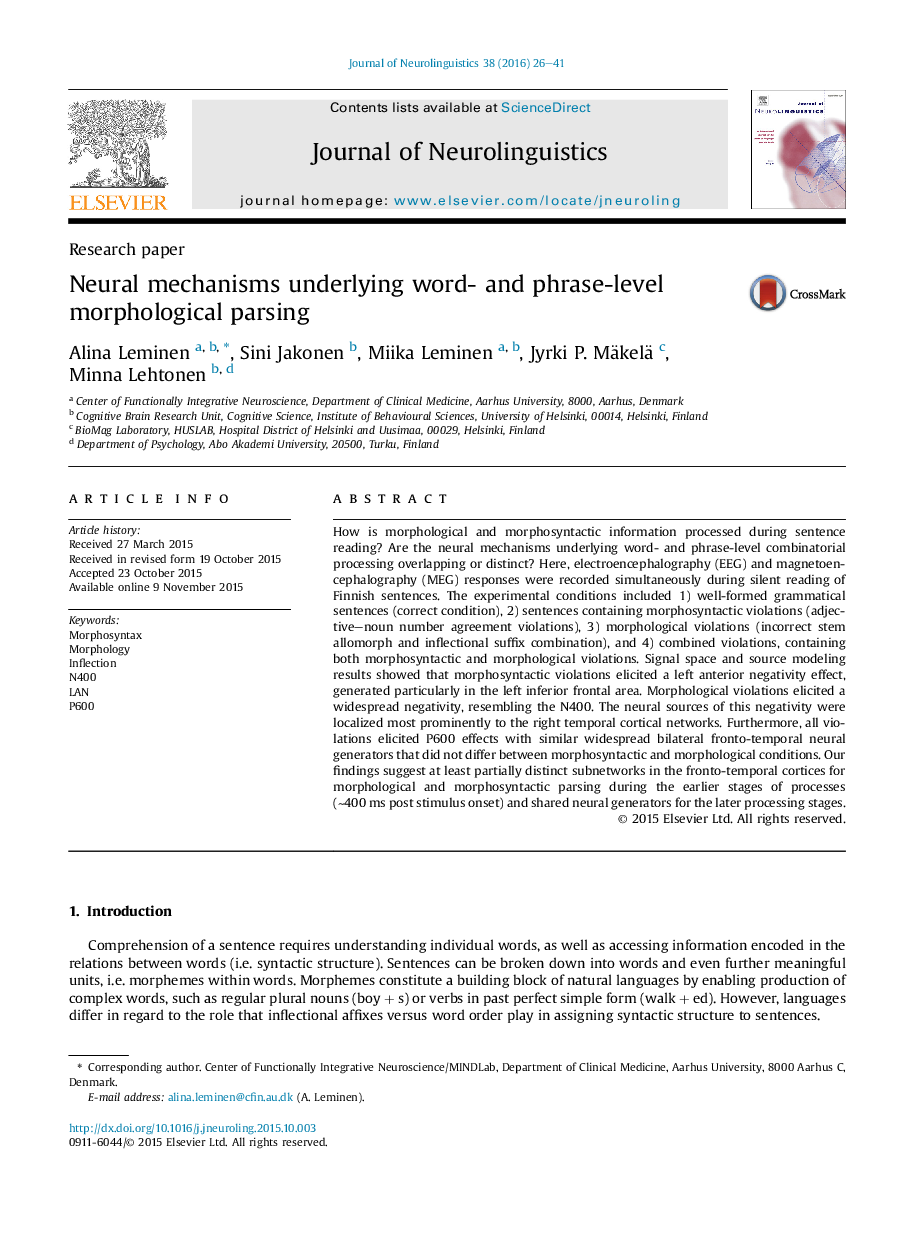| کد مقاله | کد نشریه | سال انتشار | مقاله انگلیسی | نسخه تمام متن |
|---|---|---|---|---|
| 911736 | 1473169 | 2016 | 16 صفحه PDF | دانلود رایگان |
• We contrasted word- and phrase-level morphological processing with combined EEG and MEG.
• Word level inflectional violation elicited an N400 in the right temporal area.
• Phrase level inflectional violation elicited a LAN particularly in the left frontal area.
• All violations elicited the P600 and with similar fronto-temporal source patterns.
• Word and phrase level morphological processing are supported by partly distinct frontal and temporal neural subnetworks.
How is morphological and morphosyntactic information processed during sentence reading? Are the neural mechanisms underlying word- and phrase-level combinatorial processing overlapping or distinct? Here, electroencephalography (EEG) and magnetoencephalography (MEG) responses were recorded simultaneously during silent reading of Finnish sentences. The experimental conditions included 1) well-formed grammatical sentences (correct condition), 2) sentences containing morphosyntactic violations (adjective–noun number agreement violations), 3) morphological violations (incorrect stem allomorph and inflectional suffix combination), and 4) combined violations, containing both morphosyntactic and morphological violations. Signal space and source modeling results showed that morphosyntactic violations elicited a left anterior negativity effect, generated particularly in the left inferior frontal area. Morphological violations elicited a widespread negativity, resembling the N400. The neural sources of this negativity were localized most prominently to the right temporal cortical networks. Furthermore, all violations elicited P600 effects with similar widespread bilateral fronto-temporal neural generators that did not differ between morphosyntactic and morphological conditions. Our findings suggest at least partially distinct subnetworks in the fronto-temporal cortices for morphological and morphosyntactic parsing during the earlier stages of processes (∼400 ms post stimulus onset) and shared neural generators for the later processing stages.
Journal: Journal of Neurolinguistics - Volume 38, May 2016, Pages 26–41
